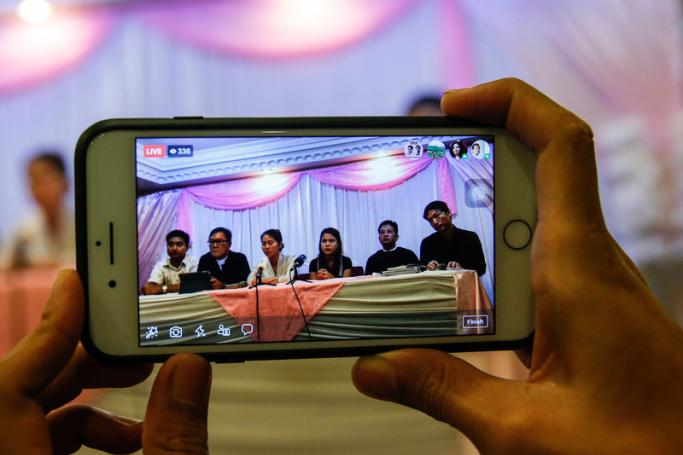NGO Free Expression Myanmar (FEM) has issued an in-depth report and assessment on Myanmar journalists’ opinions about media freedom in the countdown to elections.
As FEM notes, the report has been released to coincide with World Press Freedom Day, May 3.
As UNESCO notes, May 3 acts as a reminder to governments of the need to respect their commitment to press freedom and is also a day of reflection among media professionals about issues of press freedom and professional ethics. Just as importantly, World Press Freedom Day is a day of support for media which are targets for the restraint, or abolition, of press freedom. It is also a day of remembrance for those journalists who lost their lives in the pursuit of a story.
As FEM says, media freedom is even more vital during the Covid-19 pandemic. FEM says the key findings include concerns that:
- Media freedom declines for third consecutive year under NLD
- Facebook has become the new censor for many journalists, with more than half of all editors having problems
- Violence against journalists has increased but government have become less willing to stop it
- Freedom to report on conflict has reached new lows, while State media reliability has declined yet again
- Self-censorship is increasing significantly
The report is the result of six months of interviews with over 200 working journalists based all around Myanmar. It is full of statistics, many of which on their own are fascinating, according to the NGO.
FEM outlines areas of concern regarding freedom of speech and protest in Myanmar:
-
Pre-protest:
- 91% of charged protesters wanted to follow the law, but were caught because the law is so vague
- 56% police still think protesters require permission
- Police asked for changes in 56% of protest notifications. In 39% of these cases, the police asked protesters to change their slogans or placards
-
During protest:
- 41% of protests had the same number or more police attending than protesters. In 5% of protests, there were 10 police officers for every 1 protester
- 98% of protests were non-violent. However, 40% of protests featured the police using disproportionate forceful crowd-control measures
- 57% of the times that police used force involved slapping, kicking, punching, and beating. 18% of protesters saw what they believed was clearly unlawful force (intent to injure protesters)
-
After protest
- 62% of charged protesters were charged for not successfully notifying. This means in effect that protesters require permission to protest in Myanmar.
- 78% of charged protesters were facing “collective culpability", which potentially breaches international law
- 33% of charged protesters have had more than 10 trial dates. 13% have had over 30 trial dates
All UN member states including Myanmar have committed to uphold the right to freedom of expression, and therefore media freedom. This commitment can be found in Article 19 of the Universal Declaration of Human Rights, in the International Covenant on Civil and Political Rights, and in the ASEAN Human Rights Declaration.












